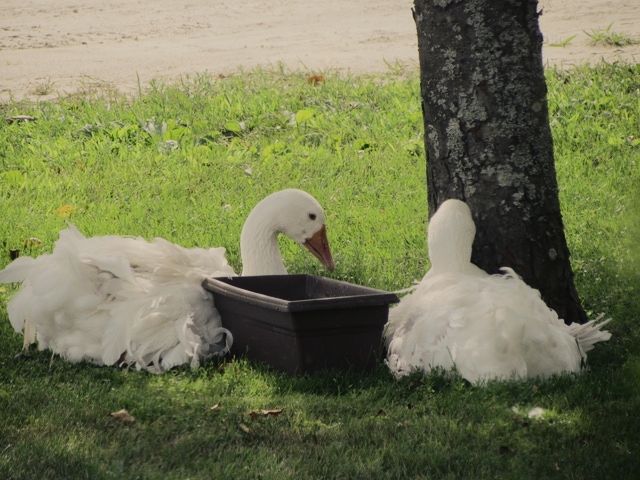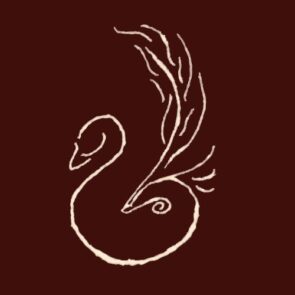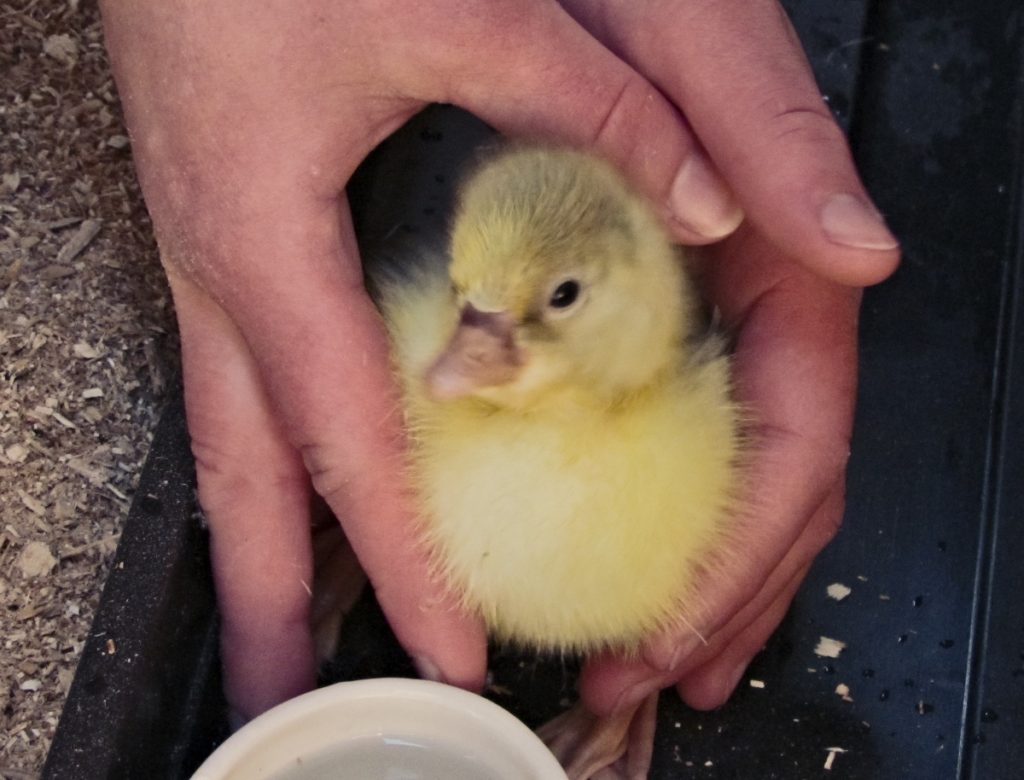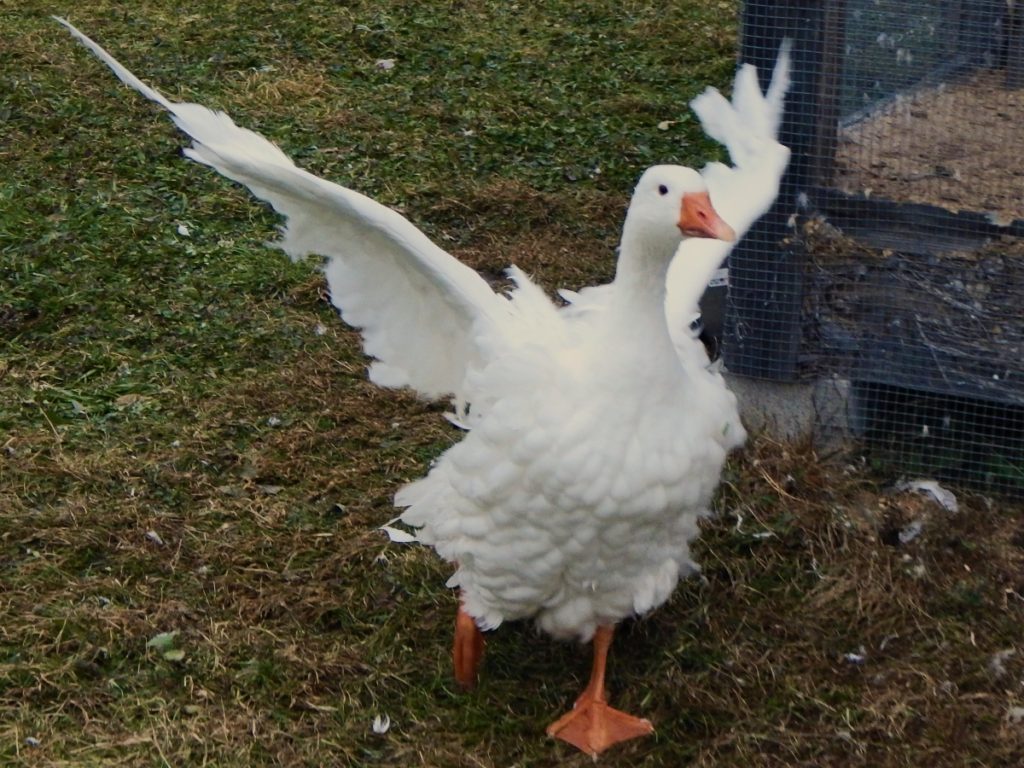4 years = 1 gosling.
Not great results! But I learned along the way, and perhaps the recounting of my experiences will be helpful to you if you are thinking about letting your geese hatch their own eggs.
Before I start in on the story and its morals, though, I feel I should offer a caveat: this is the story of what happened with my geese. I have heard stories of great success without the stress and failure that I experienced. (Possibly those people were better at being “hands-off” and letting the geese handle things….)
From the moment that my two original Sebastopol geese arrived in the mail (actually, from the moment that I received the birthday card telling me that they had been ordered for me) I hoped for them to have goslings of their own. And they did – finally.
Without further ado, here is the story of Elena:
Be Prepared to Persevere
Year 1:
I wanted so badly to let Jena set on her eggs that first breeding season. But I had read that letting a young goose hatch her eggs could be unwise, since her first-year eggs might be under-sized. I had no idea what was “average” for Sebastopols, or really even for geese in general. And Jena was only nine months old, not a full year.
Note: Between my two geese, and their (somewhat unscientific) egg records, covering six years and including about 100 eggs, I’ve come up with an average weight of 150 grams. Jena’s eggs were definitely below average that first year.
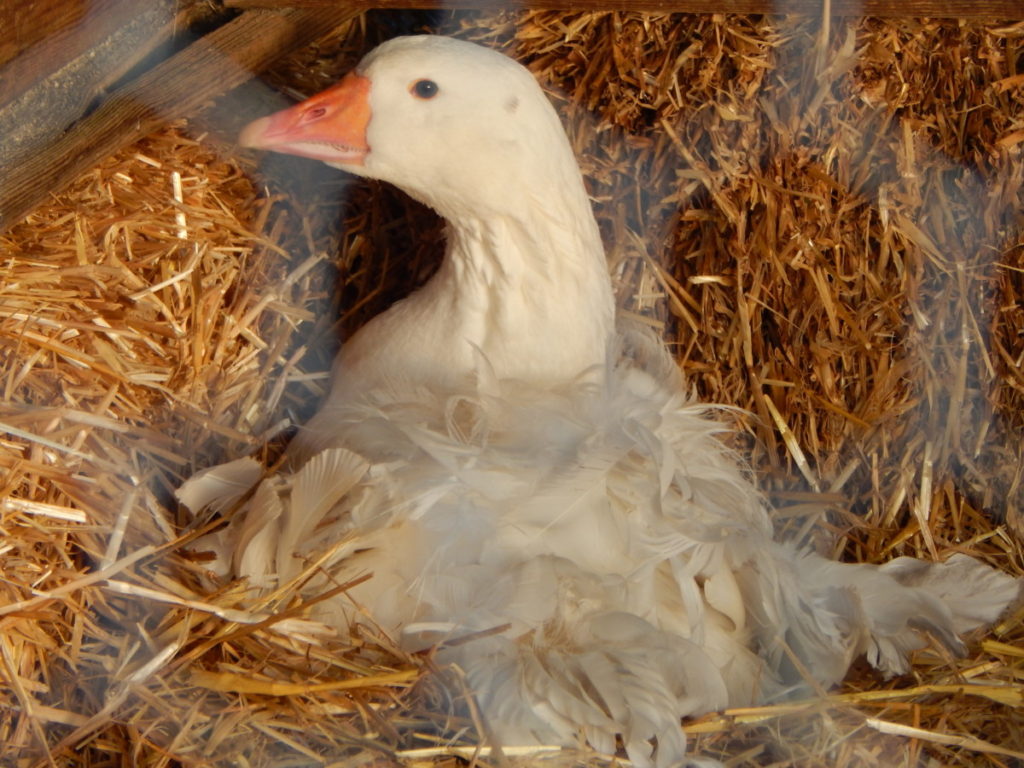
I very well might have let Jena set despite her under-sized eggs, except that I had no safe place for her to nest. My geese were living in a “goose tractor” set up on straw bales that first winter/spring. Her nest was on the ground, protected from predators by no more than a layer of straw. Hardly ideal.
So, I waited.
Be Prepared to Trouble-Shoot and Change Tactics
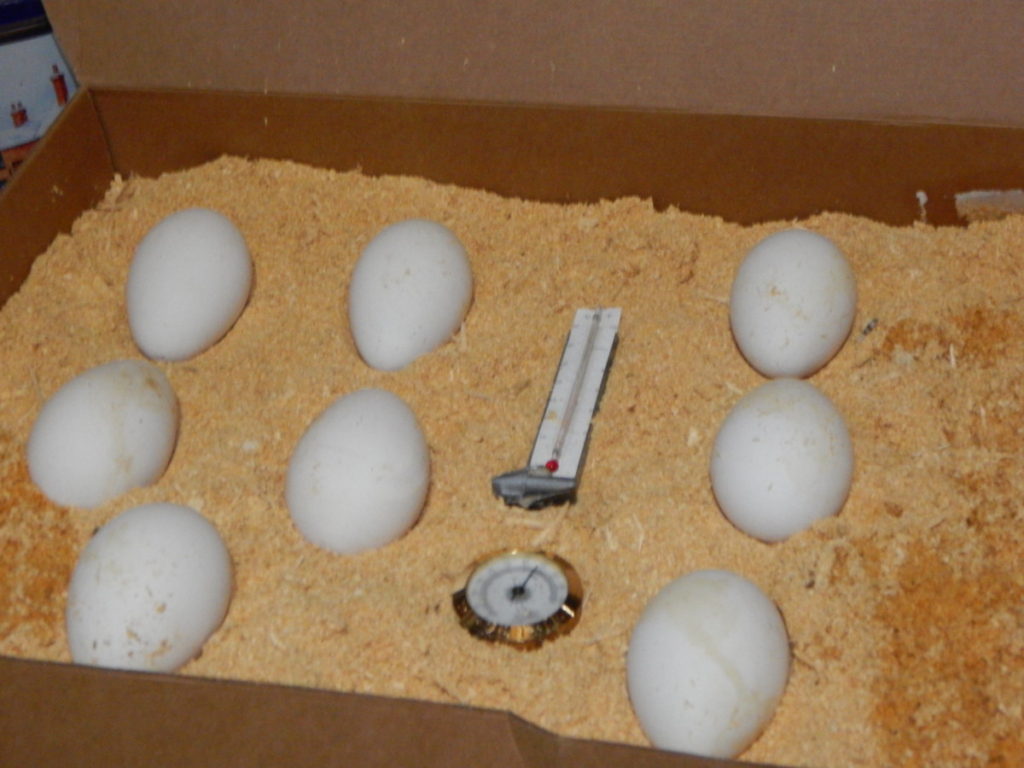
Year 2:
I built a shed, and the next spring, Jena nested in a cozy, predator-protected corner. But I stored her eggs for her until she went broody. I stored them in a box filled with sawdust, and I added ice to the sawdust every now and then in an attempt to both keep the eggs cool and to humidify them. That year, no goslings hatched, though I think two or three were close.
Year 3:
I wondered if lack of humidity — both in the nest and in storage — might have been the reason none of the eggs hatched. So, the next year, I dug a chunk of sod to put at the bottom of Jena’s nest of straw. I also put a smaller chunk of sod in a plastic box that had holes in the bottom and covered it with straw. I used that for storing the eggs, and I laid ice packs on the lid of the box to keep the eggs cool. But that year, I let Jena’s eggs collect in the nest for the most part. I only stored them for a few days at a time during a couple of cold snaps, when the day-time temperature dropped below freezing. Jena slept on her nest at night, so I didn’t worry about night temperatures.
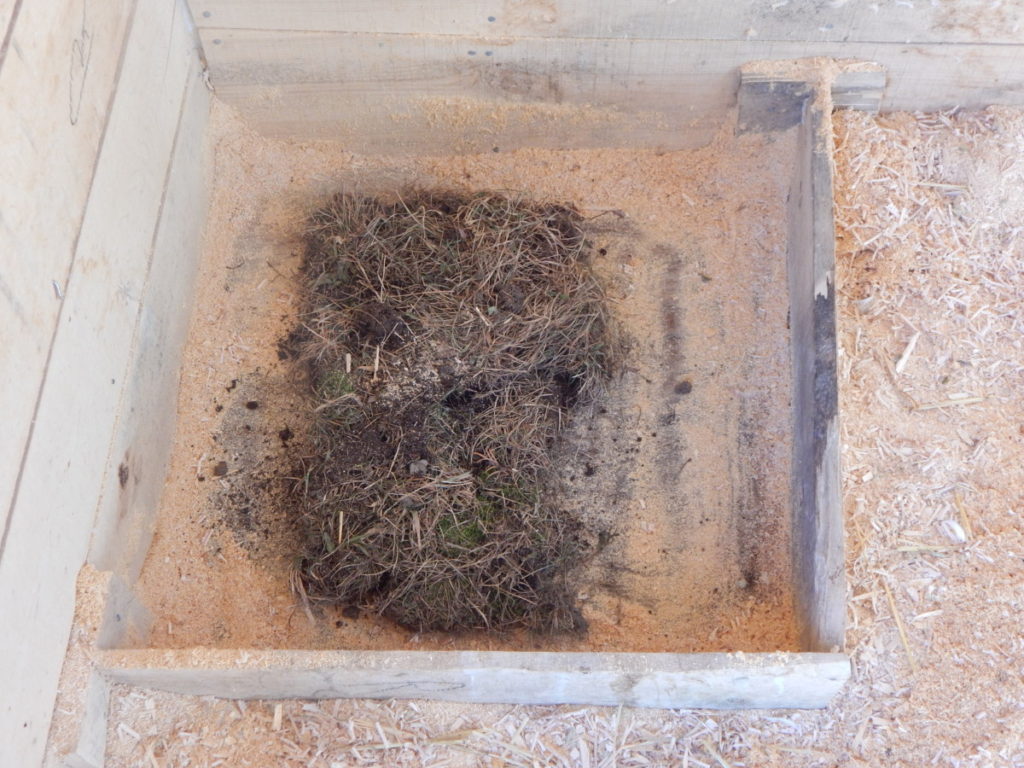
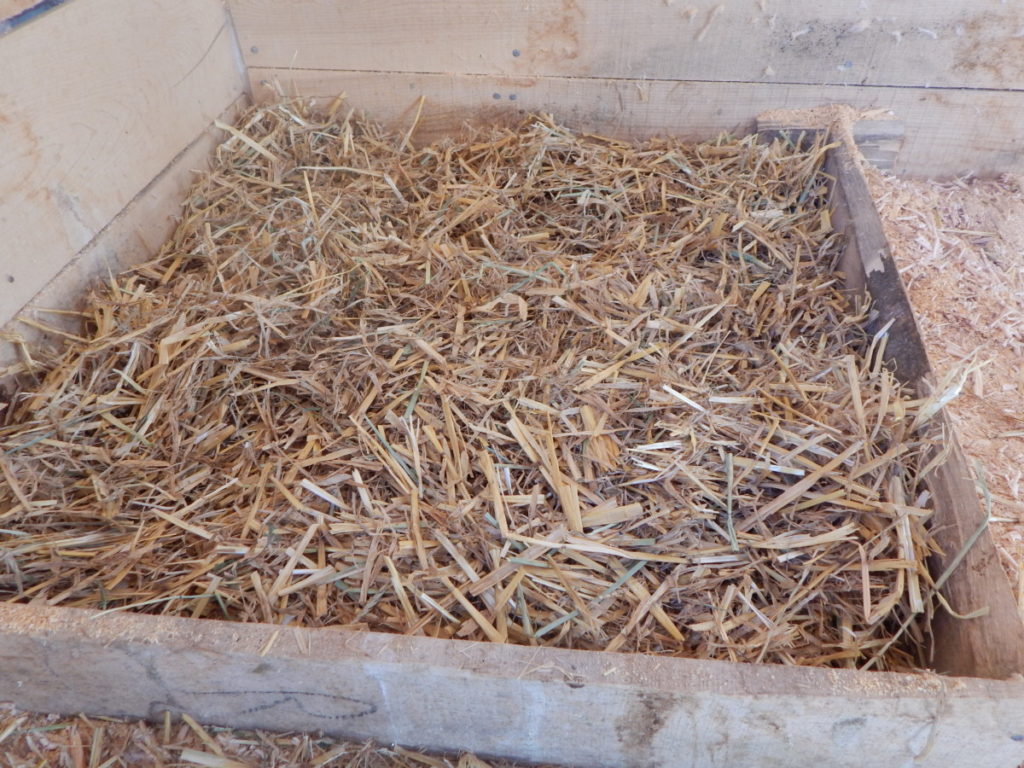
I was also concerned that lack of proper vitamins may have played a role in the goslings not hatching, so I tried mixing a breeder’s feed of my own.
That year, one gosling hatched with a little assistance from me, but it was sickly and didn’t live long. I suspected the cause was infection through the egg/navel.
Year 4:
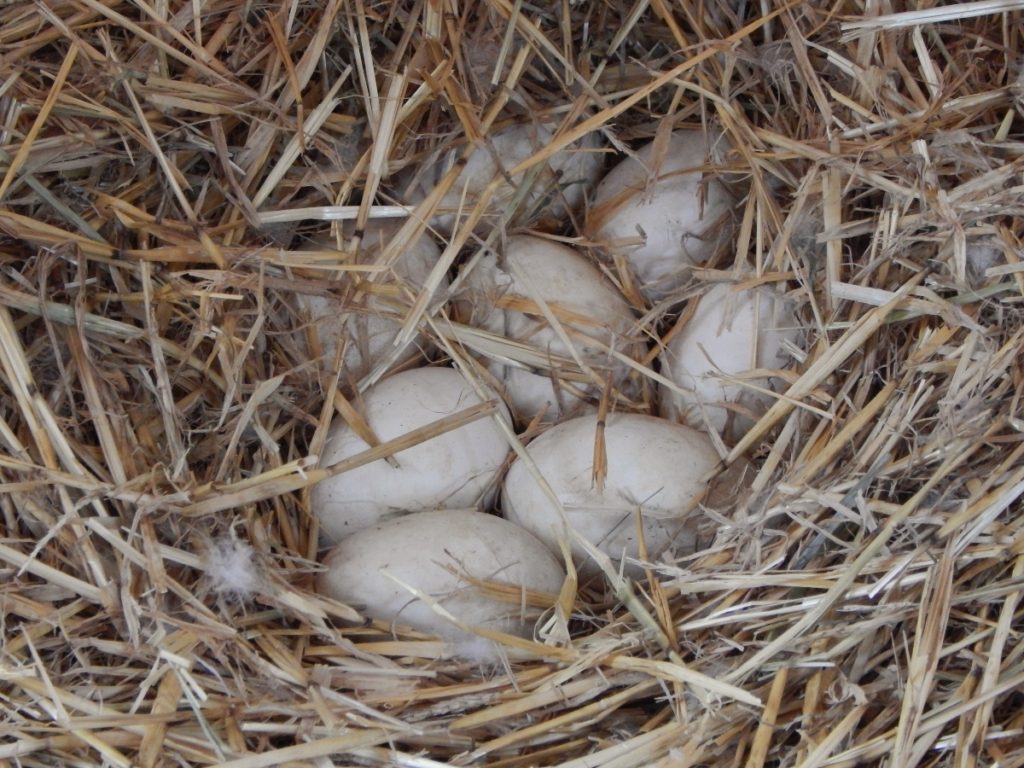
The next year, I changed my formula for breeder’s feed. I also used a mixture of dirt, sand, and peat at the bottom of Jena’s nest instead of the sod. I didn’t have to store the eggs, because the weather stayed warm, and Jena laid a small clutch and went broody fairly quickly.
That year, The first gosling hatched with assistance, but didn’t make it. Three more goslings hatched on their own, (One of them was Elena.) and one more externally pipped (poked through the shell to breathe), but never hatched. Only two of the goslings seemed healthy, and again I suspected bacterial infection through the egg shell, causing unhealed navels or death before hatching.
An “egg-topsy” on one dud pretty much confirmed this for me. The shell literally exploded when I tried to crack it open – it was so rotten! I got more confirmation of my hypothesis when I cleared away Jena’s nest after the hatching phase: the under-layer of straw was moldy! That explained the rotten smell I had noticed two or three weeks into her setting. Oddly, the smell had seemed to fade, and I thought I must have taken care of it by candling the eggs and removing the obvious duds.
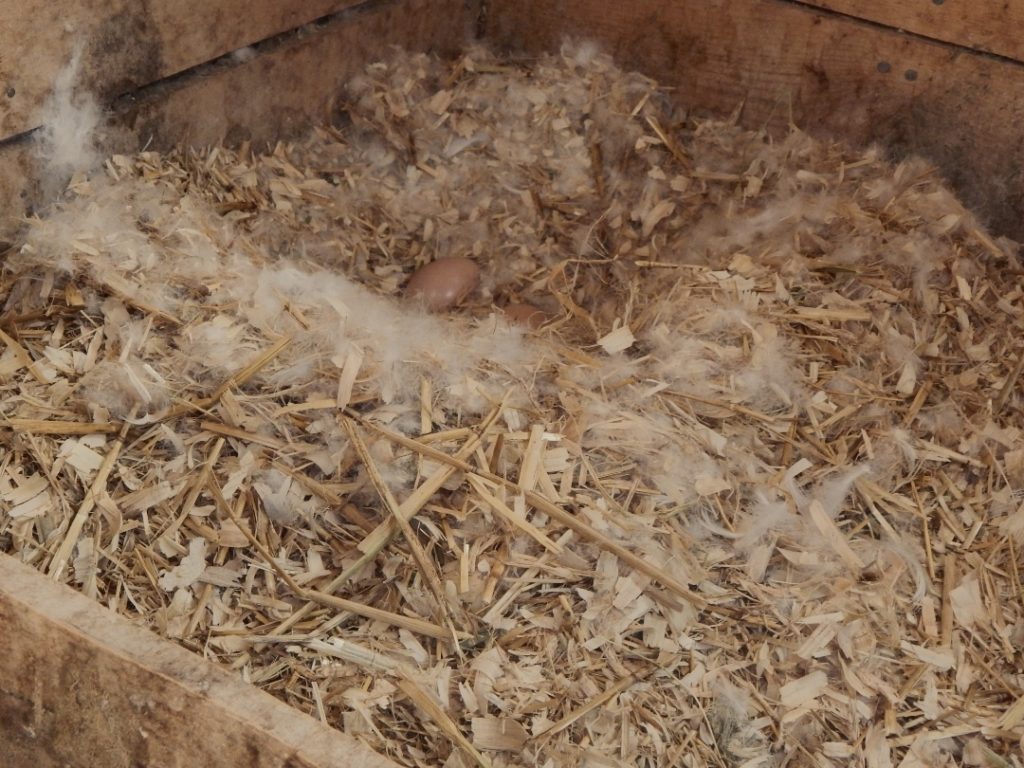
Another time, I’d like to either use only a little dry sand at the bottom of a nest of chopped straw or else skip all dirt entirely and use only a thick layer of straw. I would also keep a closer eye on the nest material and change it in the middle of the setting if necessary – although I would try to save most of the feather lining that the goose makes.
Be Prepared for the Worst
I had read about how paternally inclined ganders can be, and I had even read a story of a gander that adopted a duckling. I was hoping (and even somewhat expecting) Costi would be like that. I was not prepared for his aggressive protectiveness that made me separate him from Jena and their one surviving gosling that third year. I highly suspected him as the cause of the other healthy gosling’s death. It’s very likely that he had found her wandering from the nest, thought she was an intruder, and attacked.
He kept Jena and the remaining gosling (Elena) stuck on or near the nest, and they couldn’t even get to the food and water! Recently, I read that the gander is responsible for making sure that the goslings don’t stray too far away. This helped make sense of his strange behavior, but Costi took his job much too seriously!
This meant that my dad and I had to quickly make a divider for the goose shed.
In future, I want to hope for the best but be prepared for the possibility of bad mothering on the part of the goose and/or bad fathering on the part of the gander – just in case.
Be Prepared to Want More Geese
Elena:
Since Elena was the only surviving gosling of my beloved geese, I had to keep her.
And I knew I wanted to get her a mate eventually….
Ivan:
Ivan the gander arrived at Two Goose Farm this summer. He’s my first experience of purchasing an adult goose, and he has made it a wonderful experience! He and Elena get along famously, and I can’t help hoping that maybe, just maybe, there could be a few new goslings in the spring….
